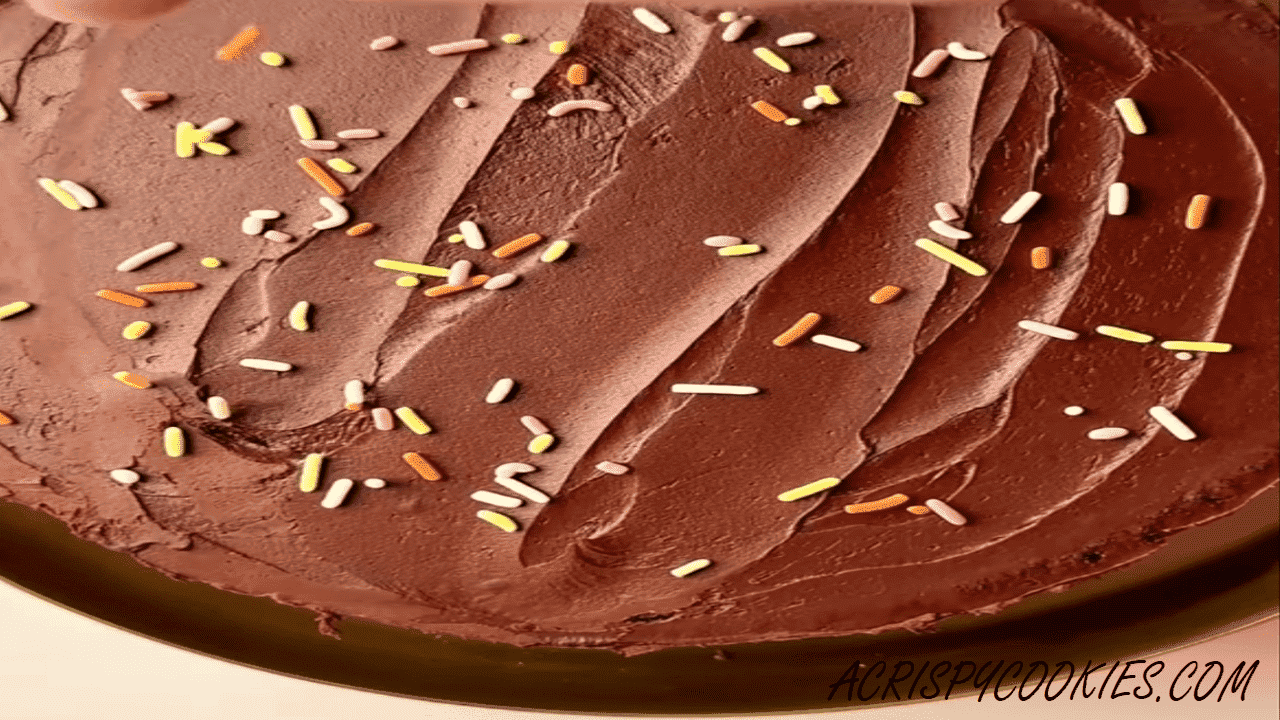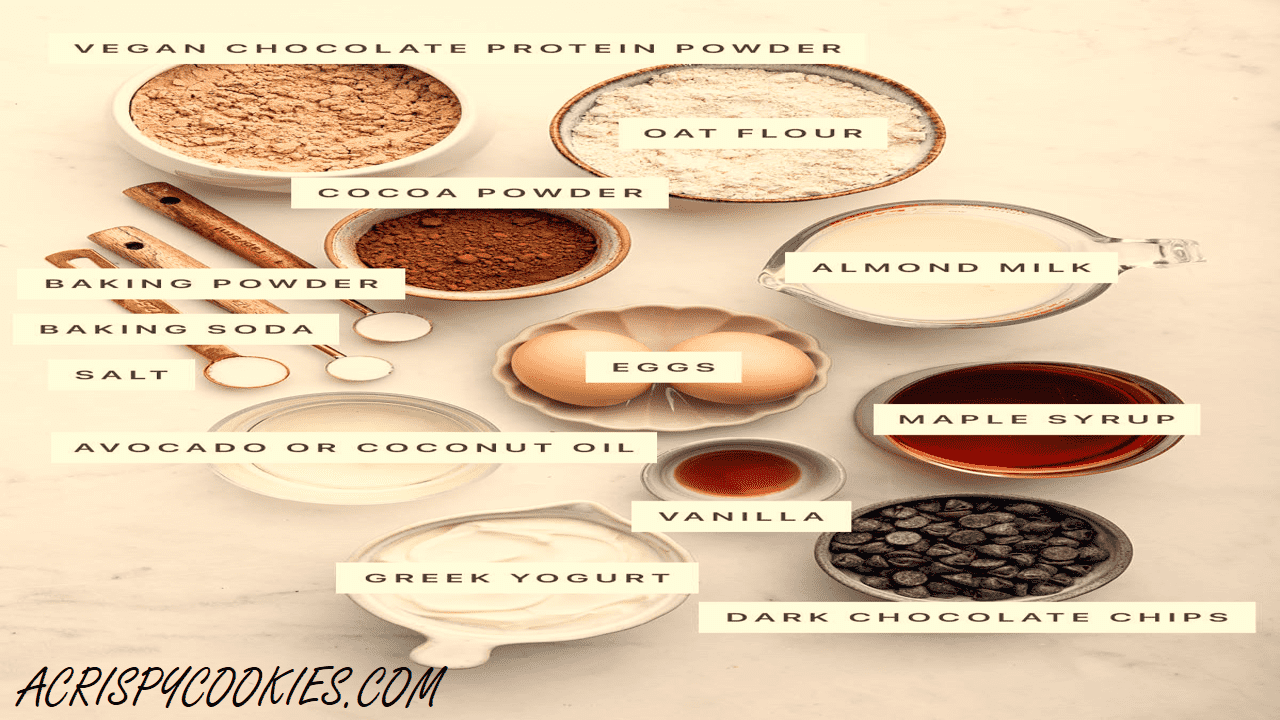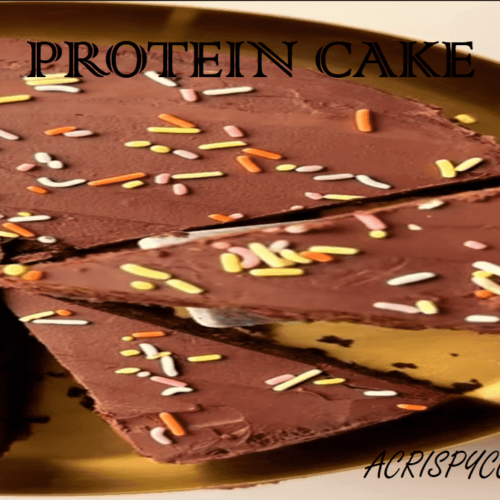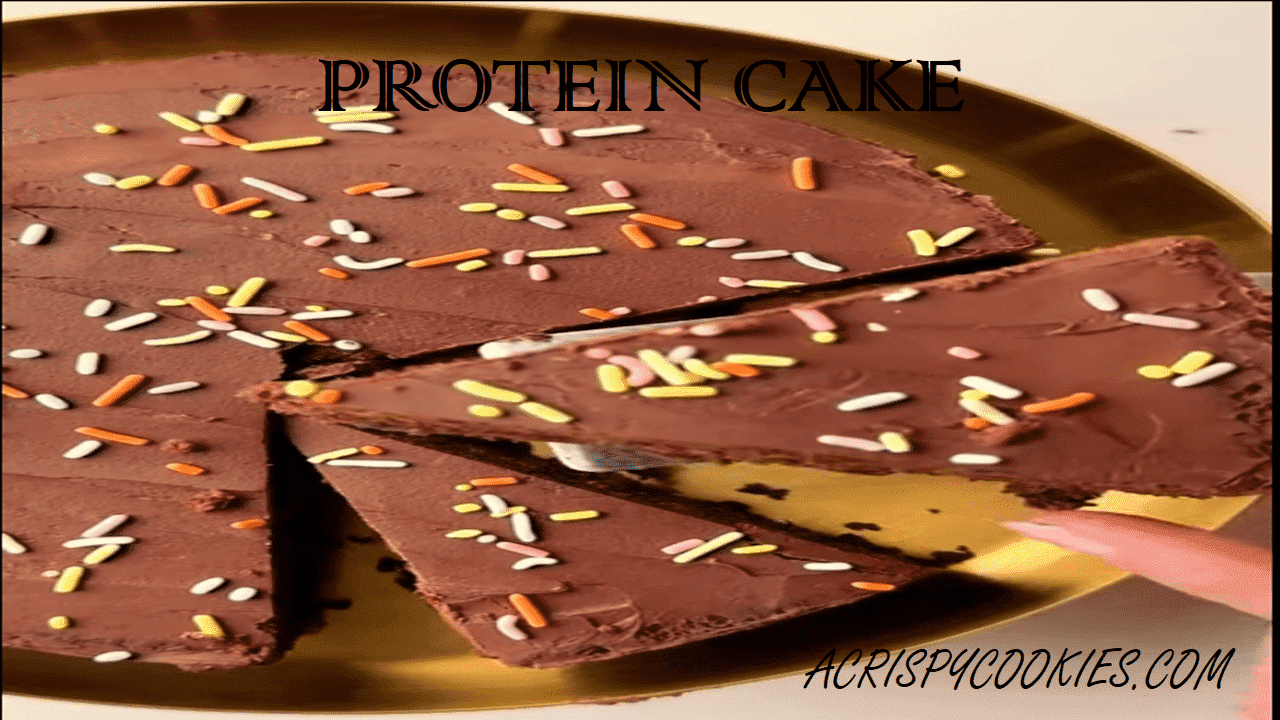CHOCOLATE PROTEIN CAKE
A chocolate protein cake is a nutritious dessert designed to be both delicious and healthy. Instead of regular flour, it uses protein powder to boost the protein content. This cake is made with ingredients like Greek yogurt and oat flour, making it naturally sweet and moist. Each slice typically has about 15 grams of protein, making it a great option for those looking to increase their protein intake without consuming a lot of extra calories.

This type of protein cake is versatile and can be enjoyed as a post-workout snack, a birthday treat, or a daily dessert. It’s easy to prepare using simple, pantry-staple ingredients. The cake retains a rich, chocolatey flavor and a fudgy texture, similar to traditional cakes, but with added health benefits. The frosting is usually light and fluffy, often made with chocolate protein powder, making the whole cake a guilt-free indulgence.
WHY CHOOSE A PROTEIN CAKE?
Traditional cakes are often loaded with sugar, unhealthy fats, and refined flour, which can lead to weight gain and other health issues. Simple protein cakes, on the other hand, use healthier ingredients that provide essential nutrients and support muscle growth and repair. Here are some benefits of choosing a vegan chocolate protein cake:
- High Protein Content: Protein is essential for building and repairing muscles and maintaining overall health. A protein cake can help you meet your daily protein needs.
- Lower Sugar: By using natural sweeteners like honey or maple syrup, protein cakes have less sugar than traditional cakes.
- Healthy Fats: Ingredients like Greek yogurt and almond milk provide healthy fats that are essential for heart health.
- Fiber: Oat flour and other whole grains used in protein cakes offer fiber, which aids in digestion and keeps you full longer.
- Versatility: Protein cakes can be customized with various flavors and add-ins, making them a versatile treat for any occasion.
INGREDIENTS FOR PROTEIN CAKE

- Eggs: Use two large eggs or a flaxseed egg for a vegan option.
- Greek Yogurt: Use any thick yogurt, dairy or non-dairy. Nonfat Greek yogurt is great for more protein and fewer calories.
- Oat Flour: Use either homemade or store-bought oat flour, choose for gluten-free if needed. You can also use almond flour for a keto version.
- Protein Powder: Use vegan protein powder, casein, or a mix of casein and whey. Avoid whey alone as it tends to dry out.
- Cocoa Powder: Use natural, unsweetened cocoa powder.
- Milk: Use any milk, dairy or non-dairy. Soy milk works well.
- Baking Powder: Helps the cake rise.
- Salt: Balances the flavors.
- Maple Syrup: Use pure maple syrup to naturally sweeten the cake. Honey can be a substitute.
- Oil: Use avocado oil or melted coconut oil. Olive oil or melted butter also works.
- Vanilla Extract: Enhances the flavor.
- Chocolate Ganache: Combine melted chocolate chips with almond milk for a rich topping.
HOW TO MAKE CHOCOLATE PROTEIN CAKE

Step 1: Preheat the Oven
- Preheat your oven to 180ºC (350°F).
- Line a 20 cm (7.8 inches) cake pan with parchment paper. Set the pan aside.
Step 2: Prepare the Batter
Mix Wet Ingredients:
- In a large mixing bowl, crack two large eggs. If you’re using a flaxseed egg, mix 1 tablespoon of flaxseed meal with 3 tablespoons of water and let it sit for a few minutes until it thickens.
- Add 1 cup of Greek yogurt to the bowl. Mix the egg and yogurt until the mixture is smooth and well combined.
Add Dry Ingredients:
- Add 1 cup of oat flour, 1 scoop of protein powder, 1/4 cup of cocoa powder, and 1 teaspoon of baking powder to the wet mixture.
- Add a pinch of salt to enhance the flavors.
Sweeten the Batter:
- Pour in 1/4 cup of maple syrup. Mix everything together until smooth.
Adjust Consistency:
- Gradually add milk to the mixture. Start with 60 ml (1/4 cup) and add up to 180 ml (3/4 cup) as needed. The amount of milk required will depend on the protein powder used. Mix until the batter is smooth and has a thick, pourable consistency.
Step 3: Bake the Cake
Transfer the Batter:
- Pour the prepared batter into the lined cake pan. Spread it evenly with a spatula.
Bake:
- Place the pan in the preheated oven and bake for 20 to 25 minutes.
- Check for doneness by inserting a toothpick into the center of the cake. If it comes out clean, the cake is ready.
Cool the Cake:
- Take the cake out of the oven and let it cool in the pan for about 10 minutes.
- Move the cake to a wire rack and let it cool completely to room temperature.
Step 4: Prepare the Chocolate Ganache
Melt the Chocolate:
- Put 1/2 cup of chocolate chips in a microwave-safe bowl.
- Microwave the chocolate in 15-second increments, stirring after each interval until the chocolate is fully melted and smooth. This should take about 45-60 seconds.
Mix with Milk:
- Once the chocolate is melted, add 2 tablespoons of almond milk (or any milk of your choice).
- Stir until the milk is fully incorporated and the ganache is smooth and glossy.
Step 5: Frost the Cake
Apply the Ganache:
- Once the cake is completely cool, pour the chocolate ganache over the top.
- Use a spatula to spread the ganache evenly over the surface of the cake.
Serve:
- Slice the cake into pieces and serve. Enjoy your healthy and delicious protein cake!

DAIRY-FREE PROTEIN CAKE OPTIONS
If you’re avoiding dairy products, making a dairy-free protein cake is straightforward. Simply swap out Greek yogurt and regular milk with plant-based alternatives for a comparable result. Here are some easy substitutes:
Replacing Greek yogurt: Swap out Greek yogurt with a plant-based alternative that has a similar thick texture. Good options include soy Greek yogurt, soy Skyr, or coconut yogurt. These alternatives provide a creamy texture and work well in baking.
Substituting milk: Unlike Greek yogurt, you have more flexibility with milk substitutes. Choose from a variety of plant-based options such as soy, almond, cashew, or peanut milk. Unsweetened soy milk is particularly recommended for baking because it adds extra protein without altering the texture or flavor significantly.
SOME RECIPE TIPS
- Choose the Right Protein Powder: The flavor and type of protein powder you choose will affect the taste and texture of your recipe for protein cake. Whey protein is popular, but you can also use plant-based protein powders if you prefer.
- Don’t Overmix: Overmixing the batter can make the cake dense and tough. Mix just until the ingredients are combined.
- Adjust Sweetness: Depending on your preference, you can adjust the amount of honey or maple syrup. You can also use sugar substitutes if desired.
- Experiment with Flavors: Add cocoa powder for a chocolate version, or try different extracts like almond or lemon for variety.
ADJUSTING FOR DIETARY NEEDS
- Gluten-Free: Ensure all your ingredients, especially the protein powder and baking powder, are certified gluten-free.
- Vegan: Use a plant-based protein powder, flax eggs (1 tablespoon ground flaxseed + 3 tablespoons water per egg), and a non-dairy yogurt like coconut or almond yogurt.
- Low Carb/Keto: Use almond flour or coconut flour and a low-carb sweetener like erythritol or stevia.

FREQUENTLY ASKED QUESTIONS
Can I Put Protein Powder In Protein Cake?
Yes, you can put protein powder into protein cake recipes. It’s a versatile ingredient that can boost the protein content of your baked goods without significantly altering their texture or taste. Protein powder blends well with other dry ingredients like flour and cocoa powder. Depending on the recipe, you can replace a portion of the flour with protein powder or add it in addition to the flour.
How To Add Protein In Baking?
There are several ways to add protein to your baking:
- Replace flour: Substitute a portion of the flour (typically up to 25%) with protein powder. This works well in recipes like cakes, muffins, and pancakes.
- Add alongside dry ingredients: Mix protein powder into the dry ingredients such as flour, cocoa powder, and baking soda/powder before combining with wet ingredients.
- Use in frosting or glazes: Mix protein powder into frosting or glazes to add protein without affecting the texture of the baked goods.
How Much Protein Per Day?
The recommended daily intake of protein varies based on factors such as age, sex, activity level, and overall health goals. Generally:
For sedentary adults, the recommended dietary allowance (RDA) is about 0.8 grams of protein per kilogram of body weight per day.
Athletes and individuals engaged in regular physical activity may require higher protein intake to support muscle repair and growth.
It’s advisable to consult with a healthcare professional or a nutritionist to determine your specific protein needs based on your lifestyle and health status.
What Kind Of Protein Powder Should I Use?
Choosing the right protein powder depends on your dietary preferences, nutritional needs, and taste preferences:
- Whey protein: Derived from milk, whey protein is popular among athletes and those who tolerate dairy well. It’s quickly absorbed by the body and rich in essential amino acids.
- Plant-based protein: Options like pea, soy, hemp, or rice protein are suitable for vegans and those with lactose intolerance. They provide a complete or complementary set of amino acids.
- Blends: Protein blends combine different types of proteins (e.g., whey and casein, or various plant proteins) to offer a balanced amino acid profile and varying digestion rates.
- Considerations: Look for protein powders with minimal additives and sweeteners, especially if you prefer natural ingredients. Taste and texture are also important factors in choosing a protein powder that works well in your baking and recipes.

STORING AND SERVINGS
- Storing
Room Temperature: You can store the cake in an airtight container at room temperature for up to three days. If the weather is warm or humid, it’s best to refrigerate to maintain freshness.
Refrigeration: For longer storage, keep the cake refrigerated in an airtight container or wrapped tightly with plastic wrap. It can remain fresh for up to a week in the refrigerator.
Freezing: To store for an extended period, wrap individual slices tightly with plastic wrap and place them in a freezer-safe bag or container. Freeze for up to 3 months. Thaw slices in the refrigerator or allow them to come to room temperature before serving.
- Serving
Room Temperature: Before serving, if the cake has been refrigerated or frozen, allow it to come to room temperature for the best texture and flavor.
Optional Frosting: If you’ve added frosting or topping, consider adding it just before serving to maintain its freshness and appearance.
Presentation: Garnish slices with fresh berries, a dusting of cocoa powder, or a drizzle of chocolate sauce for an extra special presentation.

- Tips for Serving
Use a sharp knife to ensure clean slices without crumbling.
Enhance the presentation with fruits, nuts, or a light dusting of powdered sugar.
Serve with a cup of coffee, tea, whipped cream, or a glass of milk for a delightful treat.
IF YOU LIKE THIS PROTEIN CAKE RECIPE
- Connect with us on “Crispy Cookies” by tagging us.
- Stay updated on Facebook, Instagram, and Pinterestby following us.
- Spread the sweetness by sharing or pinning this recipe on Pinterest.
- Leave a comment down below!!
“Thanks for joining our baking family. We’re glad to have you here. Happy Baking! 🍰🎉.”

Best 150 Kcal Chocolate Protein Cake Recipe
Ingredients
- 2 eggs
- 1 cup oat flour blend oats in a blender until fine
- ½ cup chocolate protein powder
- ¼ cup cocoa powder
- 1 tsp baking powder
- ½ tsp baking soda
- ¼ tsp salt
- 1 cup Greek yogurt
- ¼ cup honey or maple syrup
- ¼ cup almond milk or any milk of your choice
- 1 tsp vanilla extract
- Optional add-ins: 1/2 cup dark chocolate chips or chunks
Instructions
Step 1: Preheat the Oven
- Preheat your oven to 180ºC (350°F).
- Line a 20 cm (7.8 inches) cake pan with parchment paper. Set the pan aside.
Step 2: Prepare the Batter
Mix Wet Ingredients:
- In a large mixing bowl, crack two large eggs. If you're using a flaxseed egg, mix 1 tablespoon of flaxseed meal with 3 tablespoons of water and let it sit for a few minutes until it thickens.
- Add 1 cup of Greek yogurt to the bowl. Mix the egg and yogurt until the mixture is smooth and well combined.
Add Dry Ingredients:
- Add 1 cup of oat flour, 1 scoop of protein powder, 1/4 cup of cocoa powder, and 1 teaspoon of baking powder to the wet mixture.
- Add a pinch of salt to enhance the flavors.
Sweeten the Batter:
- Pour in 1/4 cup of maple syrup. Mix everything together until smooth.
Adjust Consistency:
- Gradually add milk to the mixture. Start with 60 ml (1/4 cup) and add up to 180 ml (3/4 cup) as needed. The amount of milk required will depend on the protein powder used. Mix until the batter is smooth and has a thick, pourable consistency.
Step 3: Bake the Cake
Transfer the Batter:
- Pour the prepared batter into the lined cake pan. Spread it evenly with a spatula.
Bake:
- Place the pan in the preheated oven and bake for 20 to 25 minutes.
- Check for doneness by inserting a toothpick into the center of the cake. If it comes out clean, the cake is ready.
Cool the Cake:
- Take the cake out of the oven and let it cool in the pan for about 10 minutes.
- Move the cake to a wire rack and let it cool completely to room temperature.
Step 4: Prepare the Chocolate Ganache
Melt the Chocolate:
- Put 1/2 cup of chocolate chips in a microwave-safe bowl.
- Microwave the chocolate in 15-second increments, stirring after each interval until the chocolate is fully melted and smooth. This should take about 45-60 seconds.
Mix with Milk:
- Once the chocolate is melted, add 2 tablespoons of almond milk (or any milk of your choice).
- Stir until the milk is fully incorporated and the ganache is smooth and glossy.
Step 5: Frost the Cake
Apply the Ganache:
- Once the cake is completely cool, pour the chocolate ganache over the top.
- Use a spatula to spread the ganache evenly over the surface of the cake.
Serve:
- Slice the cake into pieces and serve. Enjoy your healthy and delicious protein cake!
Notes

